Yamaha's V-Star 650 Custom offers a stylish and relaxed LAMS cruiser option that's ideal for those not content with a 250...
Jumping off the high tech Yamaha Niken onto the old school V-Star 650 Custom (XVS650) couldn’t have been a bigger contrast and my first impression riding the V-Star off down the road was, “What’s with the front end, where’s the power and why’s it idling like crazy all of a sudden?” in roughly that order.
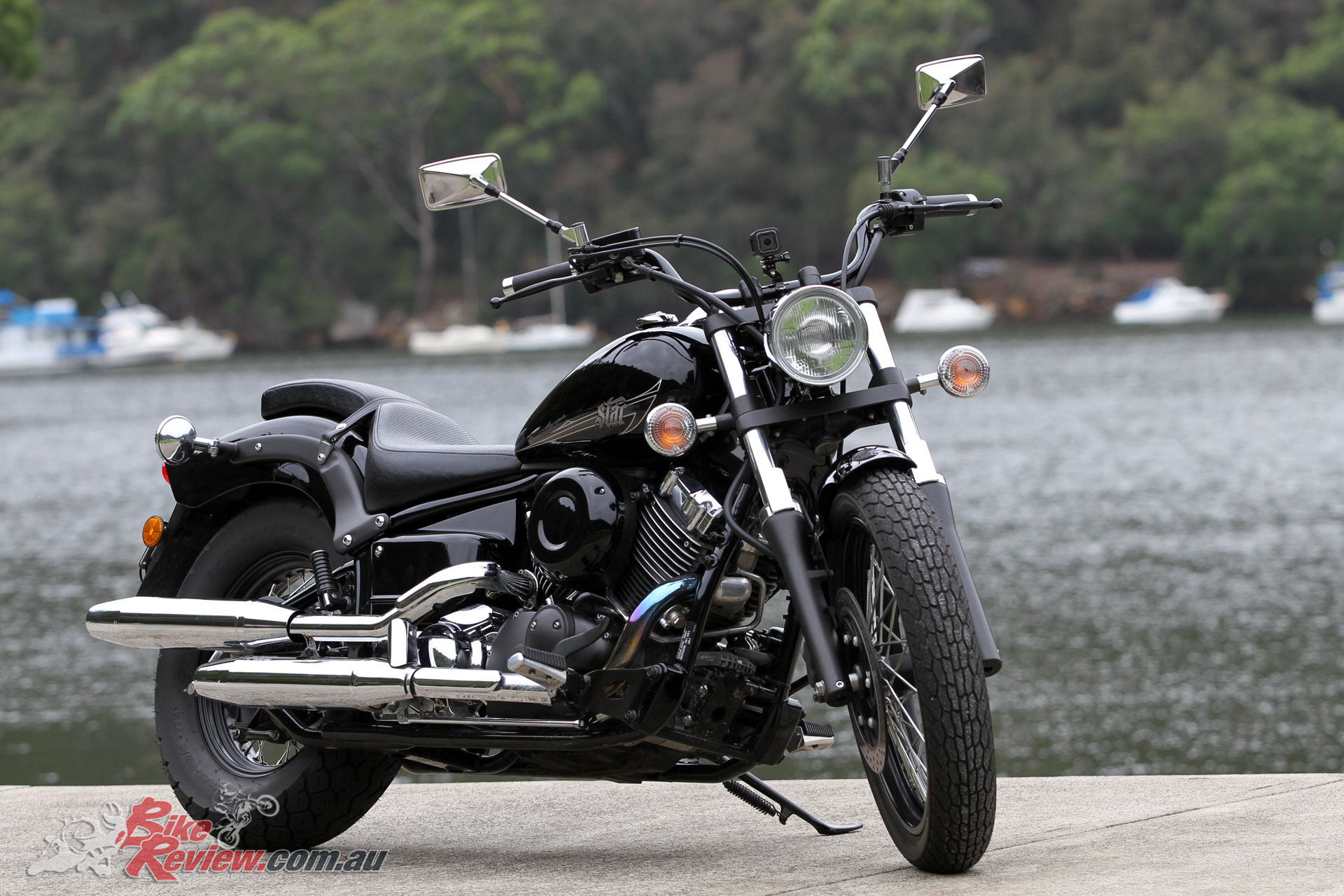
The Yamaha V-Star 650 Custom (XVS650) is a fairly traditional cruiser offering with ‘Raven’ paint punctuated by chrome
Having just received the bike from Chris Dobie at Yamaha HQ in Sydney I’d heard that the bike had a choke, but on a warm summer’s day had not realised it was on, that was until the bike started idling at about 3000rpm, which for a cruiser was well above the norm. This left me scrambling for the choke which is located under and towards the rear of the tank, inside your left leg.
There was probably a few bemused drivers watching me frantically grabbing my crotch trying to get that choke off, wondering what was going on. For the record, it’s not the easiest thing to grab while on the move – the choke that is…

The choke is easily accessible off the road, but less so when riding
The front end is also quite heavy at a standstill, while there’s about 40 claimed horsepower on offer compared to the Niken’s 115hp, which is an unfair comparison, but jumping from one bike to another, something that’s hard to avoid.
Of course the V-Star 650 Custom is a LAMS machine, choke means carbies, and there’s no ABS. It’s proper old school and it’s been around for more than a decade basically unchanged because it’s a good thing.
Having spent two weeks riding the XVS650 as my everyday ride, including freeway commutes, twisties, crawling through traffic, two-up and various photo shoots I was left impressed with this LAMS offering.
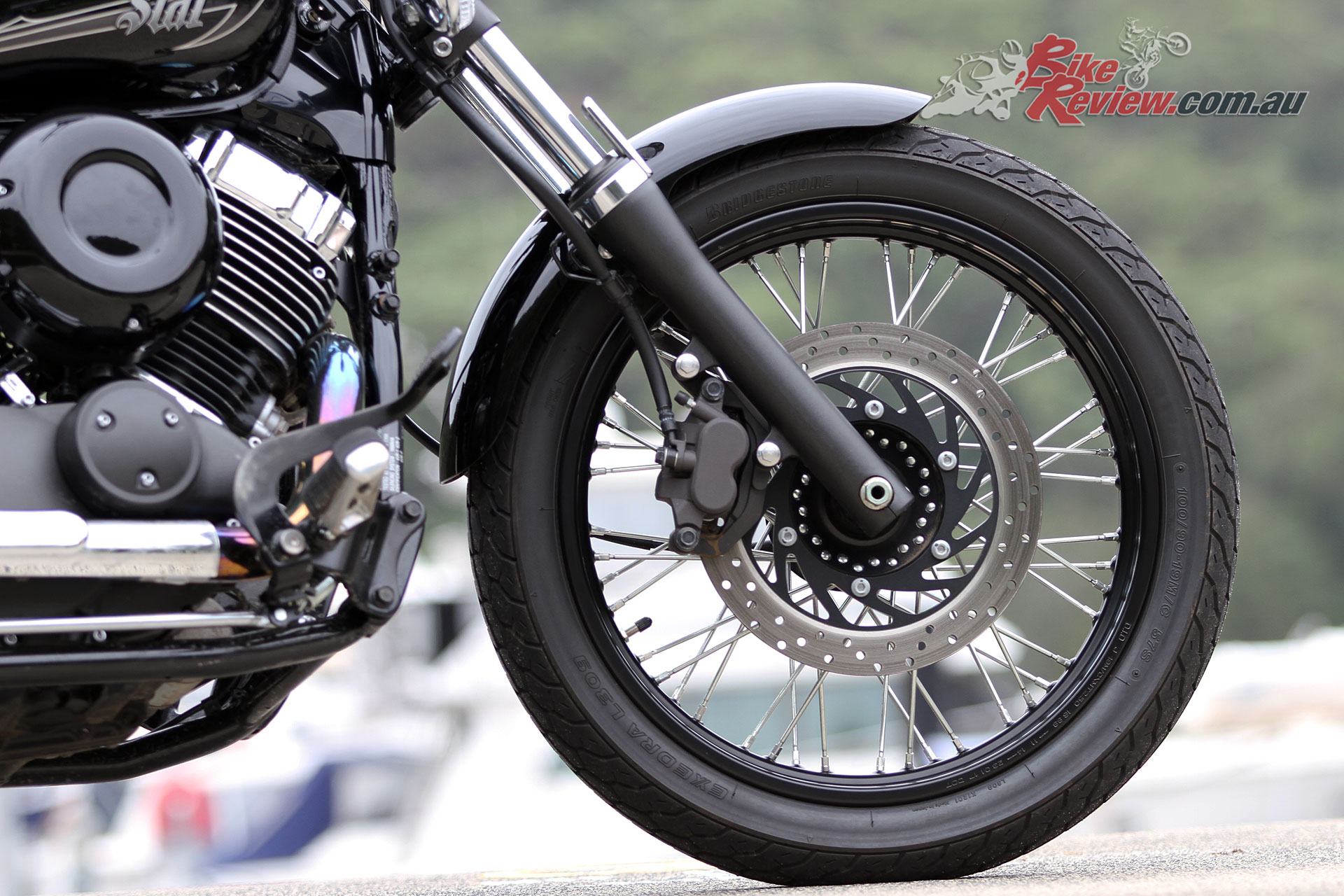
There’s no ABS on the XVS650, although there seems little need, even in the hands of a new rider
So Yamaha’s V-Star 650 Custom, or XVS650 – first up, set expectations to LAMS cruiser and all that entails. Second let’s chat the Custom versus the Classic. This is just what Yamaha had available, but I much prefer the styling of the Custom, with a cleaner and smaller tail including pillion seat, sporty front guard, and more restrained use of chrome. The Classic does benefit from nicer mirrors, as the Custom has the relatively ugly square items, with a tendency to come loose.
To my eye, the V-Star also looks like a proper cruiser, but that’s a bit of a subjective call considering I don’t actually own a cruiser myself. The quality of the paint and chrome is high however, with Yamaha’s usual attention to detail. This is essentially a $10K motorcycle new, with the cool Yamaha ‘Star’ branding on the tank and tail and a stylish tank mounted clock.

A 695mm seat height makes for an inviting perch for riders of almost any height, especially combined with a low centre of gravity
The textured rider seat is just 695mm off the ground, and simple forward controls are featured, with a slightly heavy clutch pull and ‘bars that extend up and back to the rider. For my 180cm frame the ‘bars offer a comfortable and ideal reach, with a relaxed relationship between the seat, ‘bars and forward controls.
Combine this with a very low centre of gravity and typical cruiser stability and you’ve got an inviting first motorcycle for a wide variety of riders, including those shorter in stature.
The air-cooled OHC V-twin powerplant offers 40hp and 37.5lbs-ft of torque, accessed via a five-speed gearbox and shaft final drive, with no tachometer and pure seat-of-the-pants feedback for how you should be using the gears. Keeping an eye on the speedo will also be most easily done with a half face helmet, so you can simply glance down with no chin section in the way. Doing so with a full face helmet requires a lot more head movement.
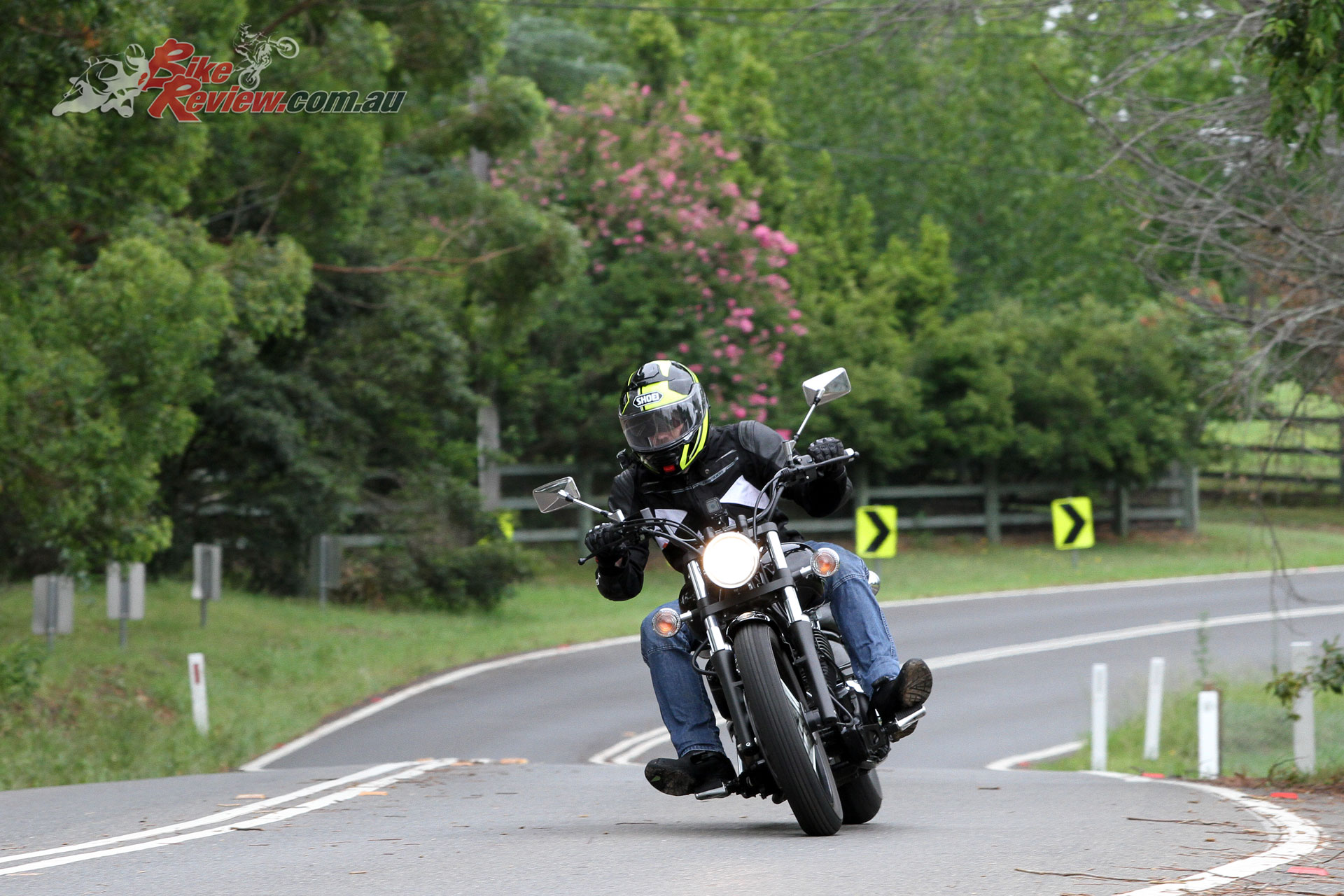
The 650cc (40 cubic inch) V-twin powerplant is small capacity by cruiser standards, but top of the LAMS cruiser category
After getting over the shock of going from 115hp to 40hp, the V-Star actually offers a torquey mid-range and good top end, while being happy to pull from low rpm if you’re sitting a gear or two too high. First gear is relatively short, and is the most obvious location where you can get some compression lock going when aggressively downshifting, while setting off in second gear isn’t an issue for the more experienced rider.
The V-Star will happily crawl along in traffic at very low speeds too, either in first or second, so commuting duties won’t be an issue. Fueling tends to be smooth, as long as you’re using the gears and throttle with some finesse, while being too lazy or building your skills on this machine will see some clear feedback of good riding habits from bad.
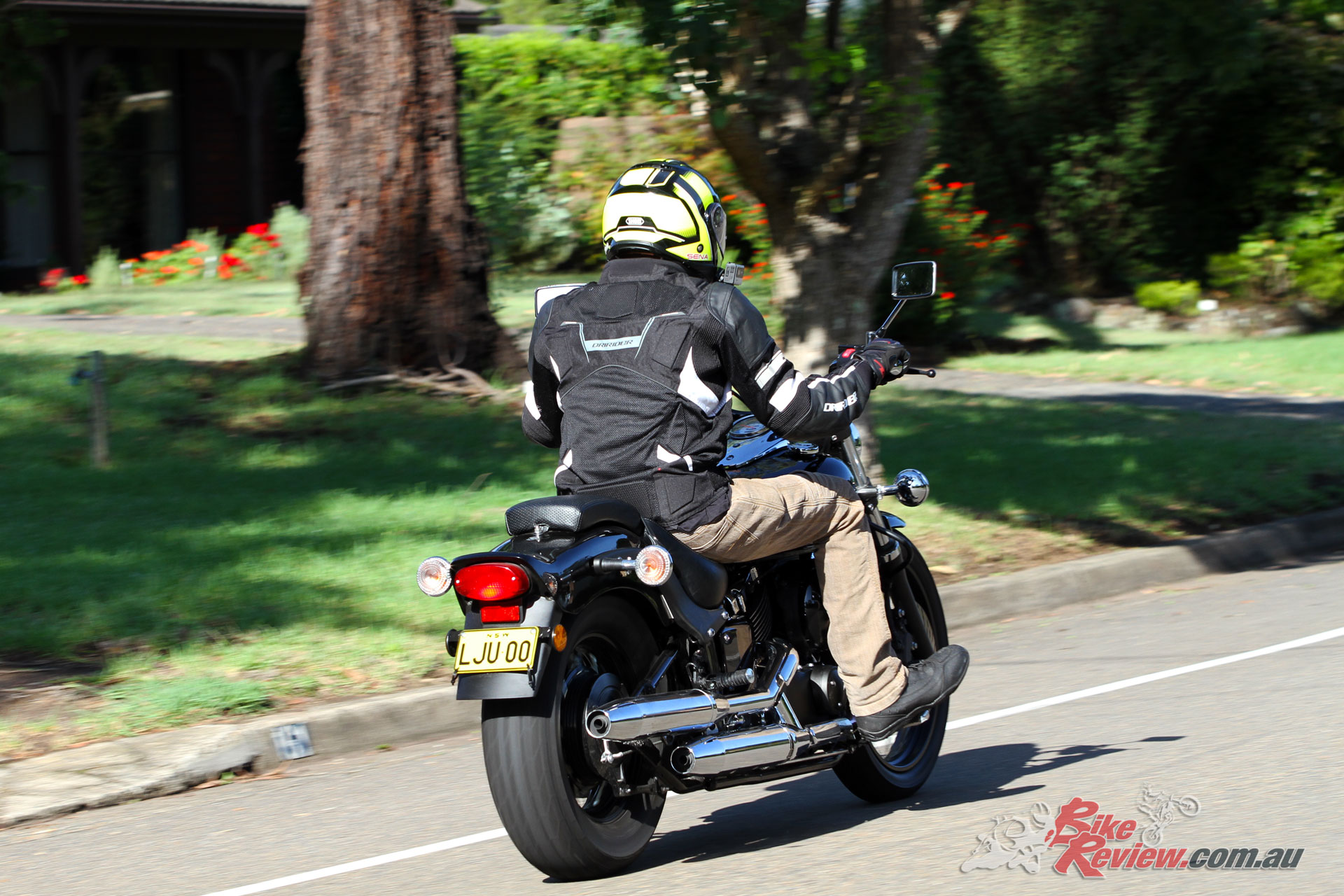
The V-Star 650 is as at home in crawling traffic as it is doing an urban commute or having a cruise through the twisties
Brakes are basic, with a single disc front and drum rear, however the rear is powerful and capable of plenty of around-town duties in conjunction with engine braking, and combined the two will bring the XVS650 to a relatively rapid stop – for a cruiser. You’re pulling up 230kg of motorcycle plus rider though, obviously don’t expect sportsbike-like performance.
Suspension is also basic but does the job and at around 70kg my main complaint was the rear shock struggling over sharp bumps at low speed. Interestingly, heading out to the local bumpy twisties the rear suspension actually improved at a decent pace, say at 80km/h and actually took some of the sharpness felt at lower speeds out. There’s a bit of dive on the front forks too on heavy brakes, however the bike itself is well balanced between the two and I never noticed any see-saw effect.
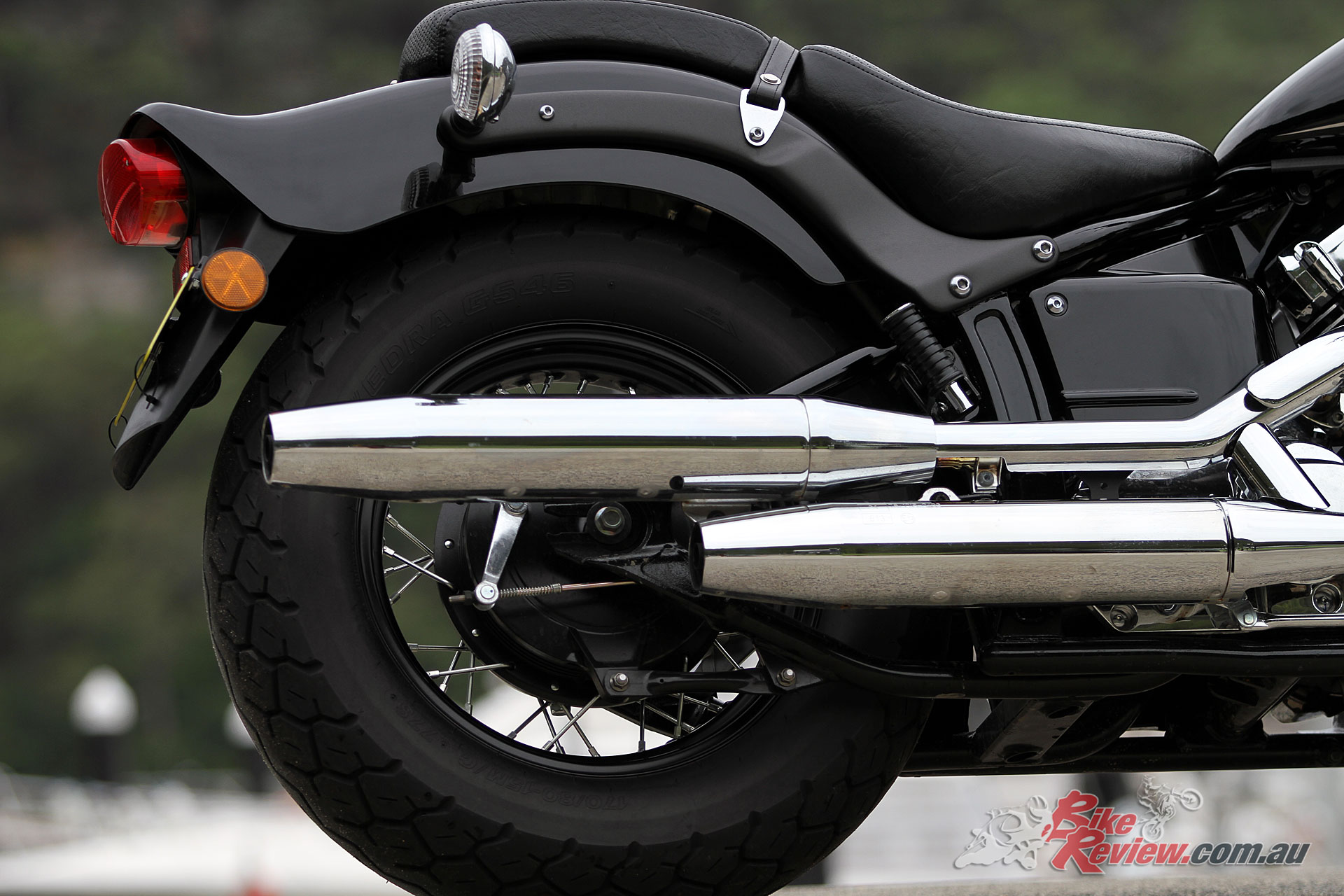
Cross-laced spoked wheels are a 19in front and 15in rear, and take tubed tyres. The rear brake is a 200mm drum system
Wheels are a 19in front and 15in rear, spoked with black rims, with very front-endy handling, especially at lower speeds where ‘bar input is used for more drastic low speed changes of direction, while at higher speeds handling is more typical. The relatively thin front tyre at 100/90 – 19in, and round profile on the 170/80 – 15in rear also no doubt help contribute to the bike’s easy and responsive handling.
Standard tyres were good in the dry and offered good grip and feel when warm, while still providing confidence in the wet conditions we had for some of the test period. I could lock up the rear if I really tried and get a squeak out of that rear tyre as it momentarily lost grip, while probably the most noticeable negative feedback I got from the bike was when it would track along inconsistencies or grooves in the road. That would be transferred back up the ‘bars, and while easy to control is going to be an uncomfortable experience for new riders until they get used to it.
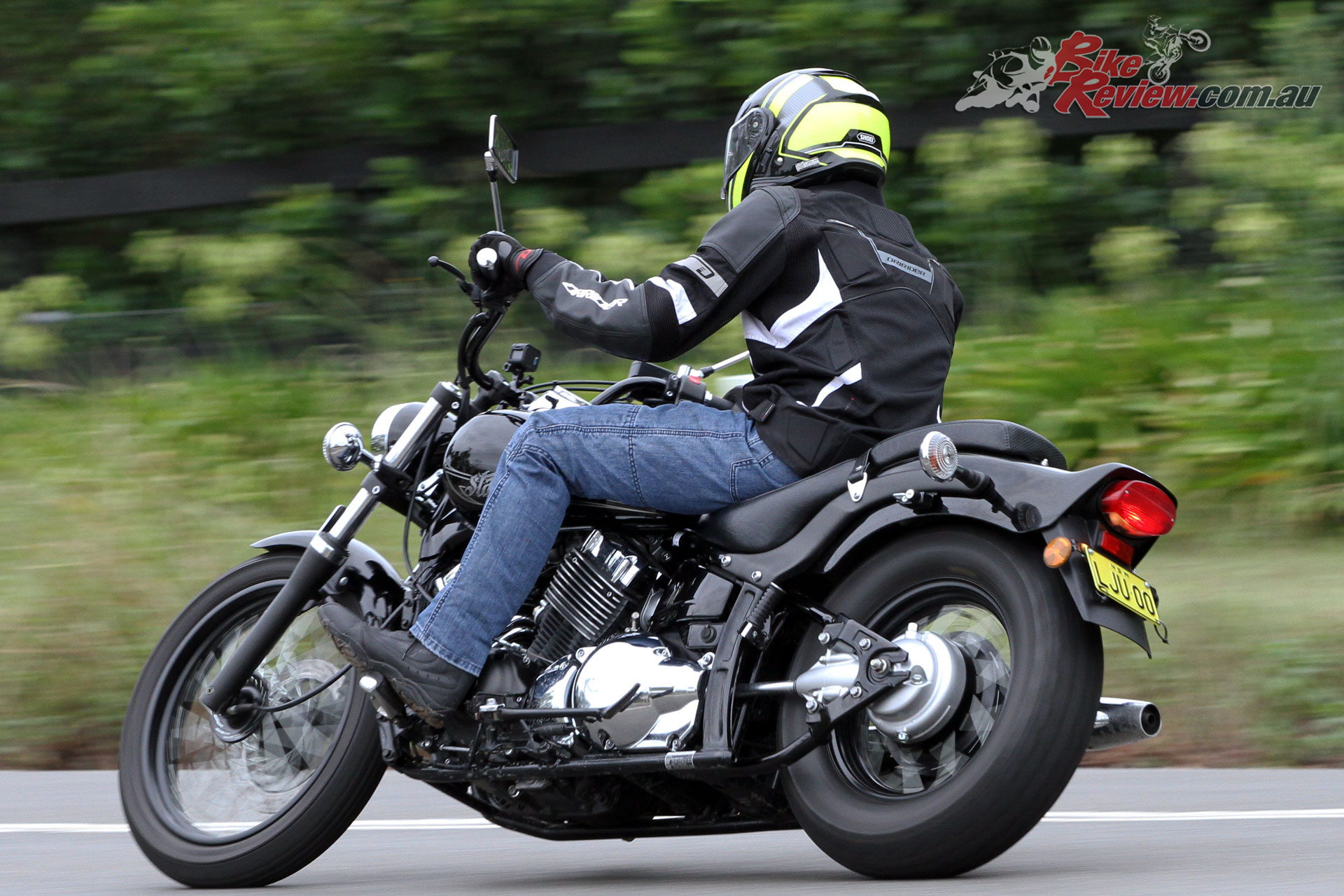
The V-Star 650 has strong torque from down low through the rev range and a five speed gearbox is mainly noticed on the freeway
The train-tracking on damaged surfaces and the annoying mirrors are my biggest criticisms of the XVS650, while there’s no doubt that being a carby model in winter with that choke will slow you down by adding a bit of warm-up time to trips. How much I can’t guess during this balmy warmer weather, the bike benefits from the choke starting cold now, so a bit I’d imagine.
The lack of ABS is also noteworthy, as I’m a big proponent of this technology on bikes for new riders, just because it can help ensure the excitement of youth and inexperience doesn’t turn into a tumble down the road. With this said the benefits of ABS would be smaller on a machine like this for various reasons, in comparison to say a regular LAMS sportsbike or nakedbike.
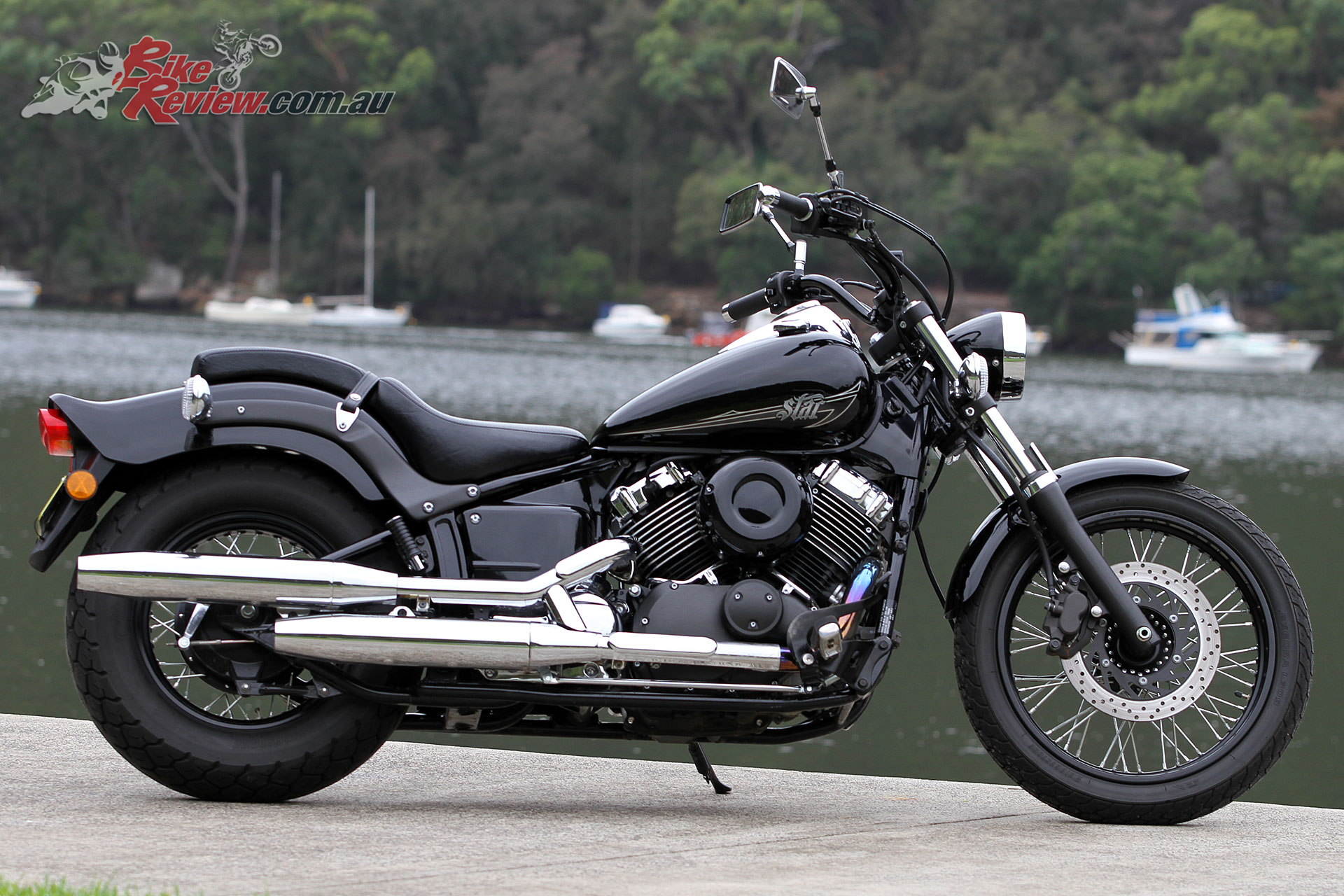
The Yamaha V-Star 650 Custom (XVS650) is a great option to consider for the more demanding new rider after a cruiser
2019 Yamaha V-Star 650 Custom (XVS650) Conclusion
Regardless of the conditions the V-Star 650 offers a relaxed but fun ride, with enough torque to have some fun and get the blood flowing. I personally found ground clearance plentiful and it’s a machine that let you cruise along interesting motorcycling roads at a pace that is both engaging and not requiring of illegal speeds. It’s also ideally suited for commuting, making for a good all-rounder.
Obviously being a 650cc offering you’re buying into more performance than a 250cc cruiser, so there’ll be a little bit of a trade-off there, as far as pure ease of getting started. The flip side of that is that you’ll have a motorcycle that will offer the thrills and be capable of developing your skills for longer while you go through that licensing process, which at three years in most places in Australia is a fairly long period.
If you’re considering getting started on a cruiser, definitely consider the Yamaha V-Star 650.
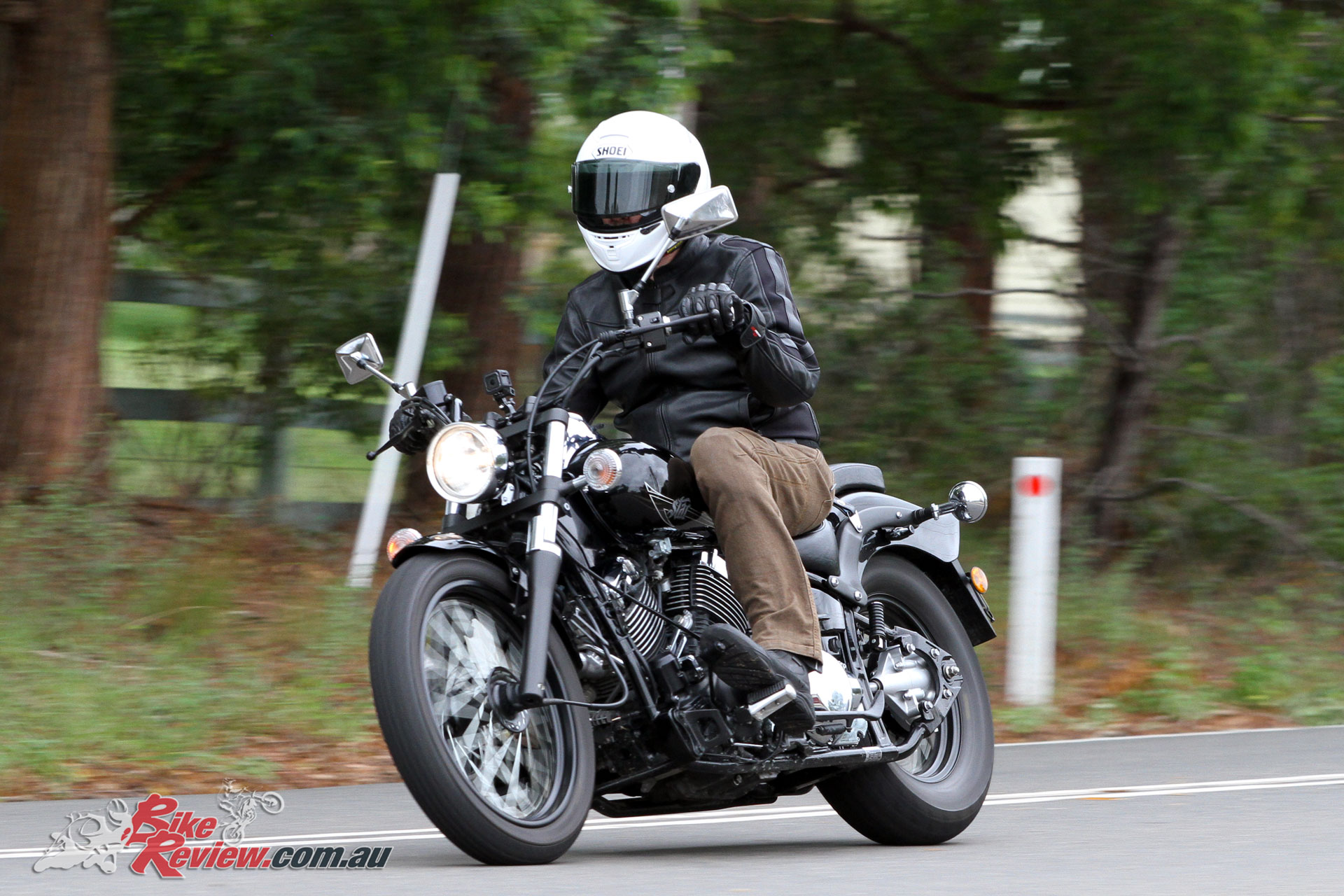
2019 V-Star 650 Custom (XVS650)
2019 Yamaha V-Star 650 Custom (XVS650) Specifications
Price: $8,799 RRP + ORC
Warranty: Five-year warranty
Colours: Raven
Claimed power: 40hp[29.2kW]@6500rpm
Claimed torque: 50.9Nm[36.5lbs-ft]@3000rpm
Wet weight: 233kg (claimed)
Fuel capacity: 16L
Engine: Air-cooled 649cc four-stroke, four-valve, SOHC, 70-deg V-Twin, 81mm x 63mm bore x stroke, 9.0:1 compression ratio, Mikuni 28mm downdraft carb
Gearbox: Five-speed constant mesh, shaft final drive
Clutch: Wet multi-disc
Chassis: Steel double-cradle frame
Suspension: 41mm aluminium telescopic forks, 140mm travel, Link-type rear shock, preload adjustable, 86mm travel
Brakes: 298mm rotor, two-piston caliper, 200mm rear drum brake
Wheels & Tyres: Lace-spoked wheels, black rims, 19in front, 15in rear, 100/90-19M/C 57S, 170/80-15 M/C 77S (tube-type tyres)
Dimensions:
Wheelbase: 1610mm
Seat height: 695mm
Overall height: 1075mm
Overall width: 880mm
Overall length: 2340
Ground clearance: 140mm
Instruments: Tank mounted single analogue dash, speedo, trip meter, indicator, engine, neutral, highbeam lights
2019 Yamaha V-Star 650 Custom (XVS650) Gallery
The Verdict | Review: 2019 Yamaha V-Star 650 (XVS650)
Relaxed
Yamaha’s V-Star 650 or XVS650 has been around for a while and still rocks carbies, with no ABS and a real old-school attitude. It’s still a great LAMS or learner cruiser with plenty to offer, and a lot more performance to grow into, in comparison to 250cc options, making it well worth a look for those keen to start riding on a cruiser.


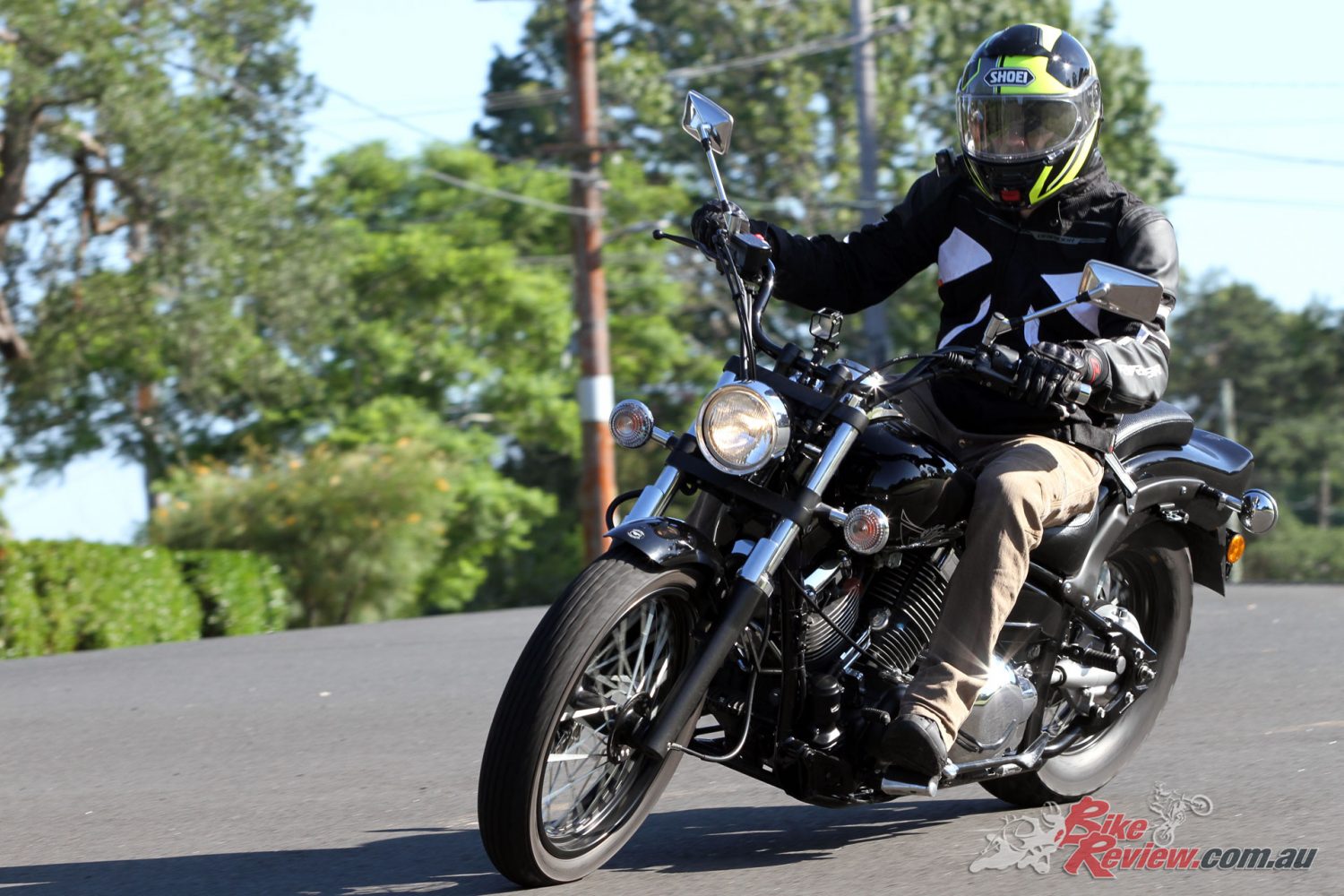




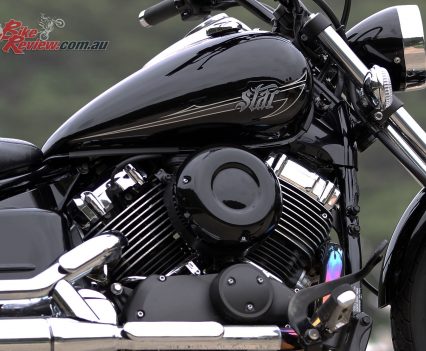
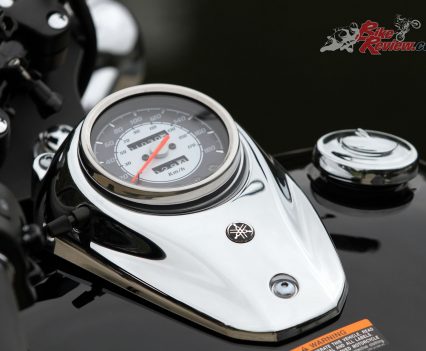
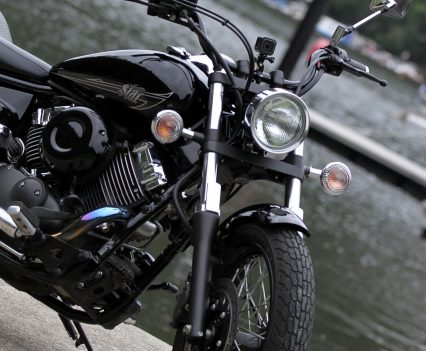
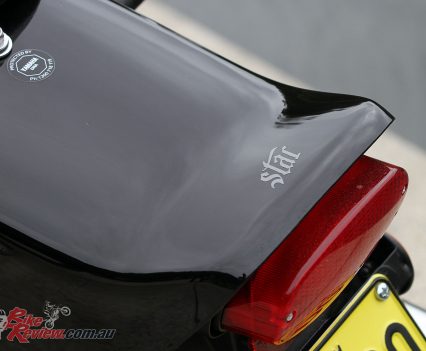
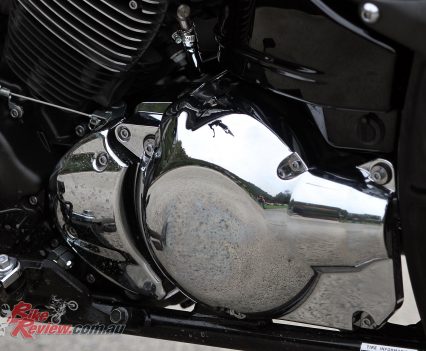
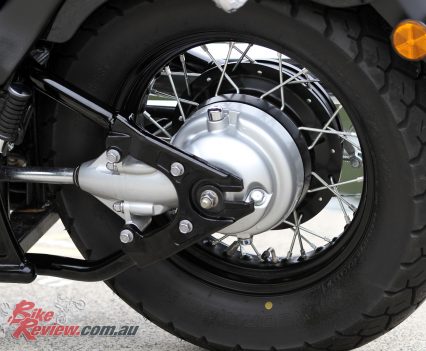
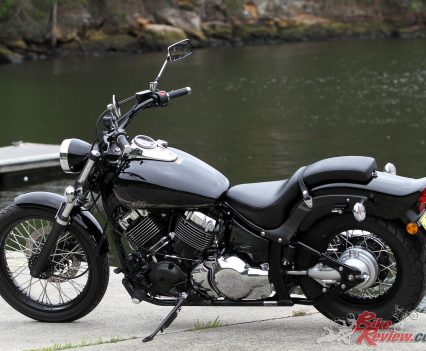
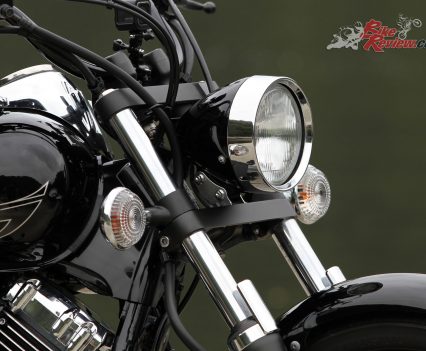
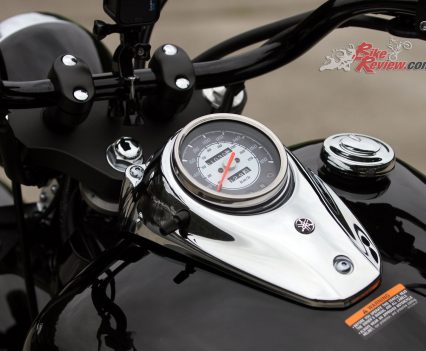
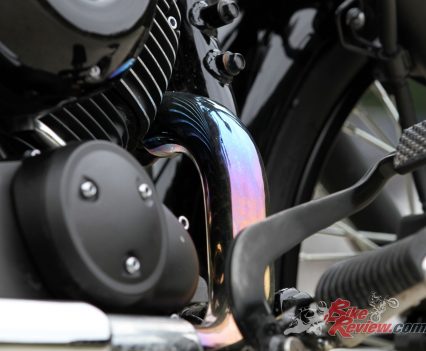
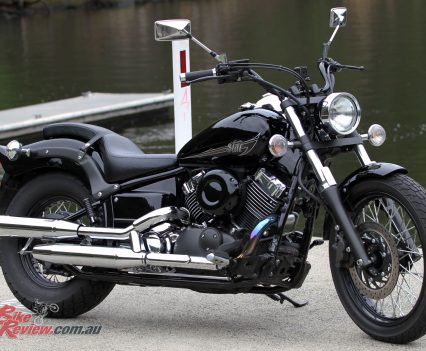
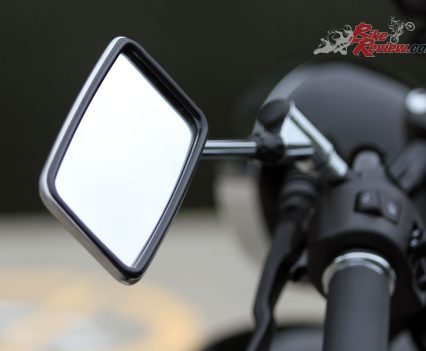
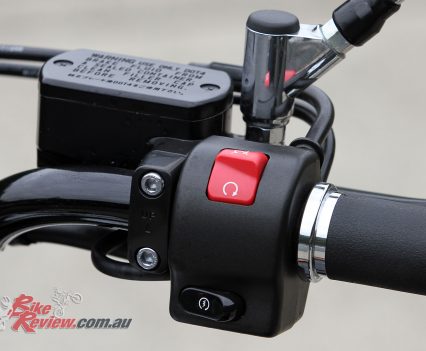
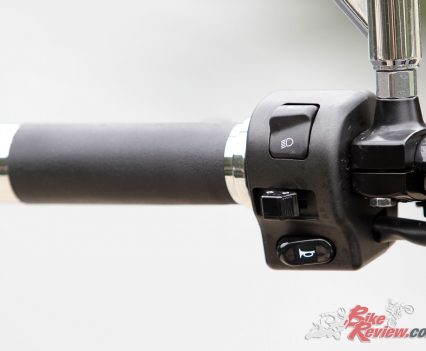
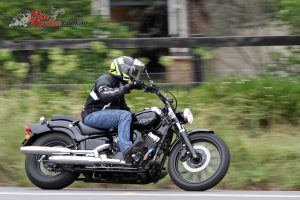
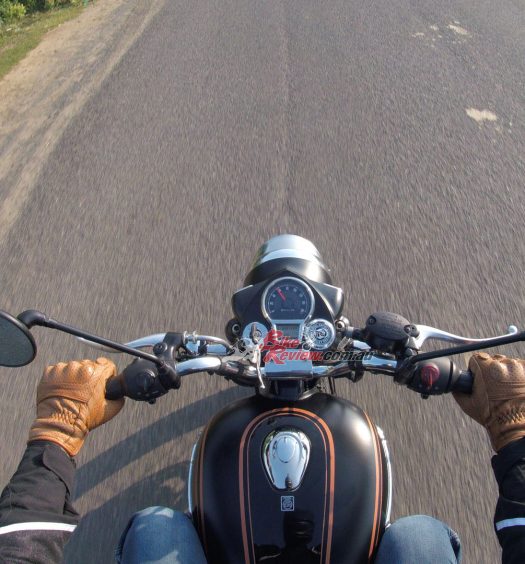
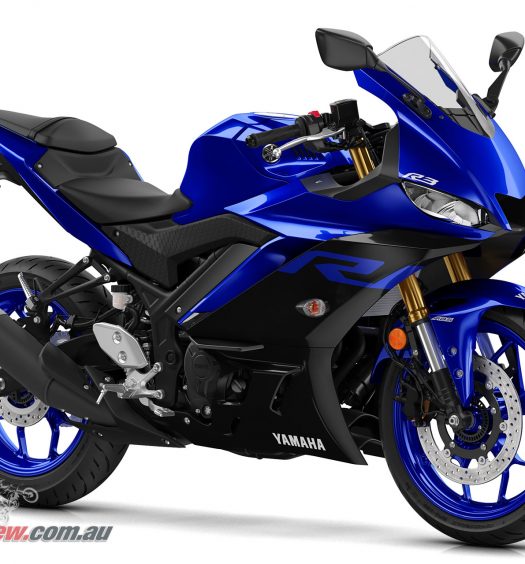
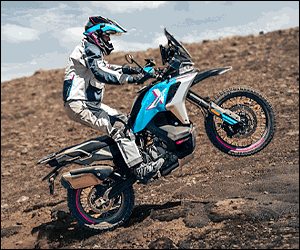




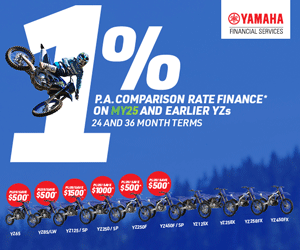
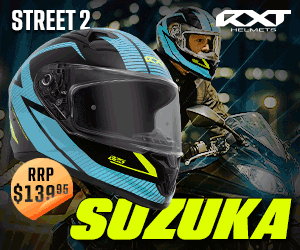







June 7, 2019
Any parts changed since the early models to enable use of Ethanol mix fuel?
June 8, 2019
Afraid not – particularly not running carbies, but then most motorcycle manufacturers don’t recommend using ethanol-mix fuel, and it will void the warranty on some brands.
August 6, 2019
I live in Arkansas and have a 2005 XVS650 Classic. Most of our readily available fuel is a minimum 10% ethanol mix, with some exceptions if you look long enough. I run this in my Classic all the time with no problems. I do drain the carbs when I have to let it sit for any period of time (more than a week) to prevent the “gumming up” that occurs when ethanol fuel sits in them for a while. This literally takes 2 minutes, a 6 inch piece of small hose, a plastic water bottle to catch the fuel (which I pour back into the tank) and is no bother at all. I am away from home a minimum of 6 months of the year (every other month) and I have never had any problems with the bike starting and running after adopting this strategy.
I did take apart and clean the carbs when I bought the bike and there was a lot of gunk that needed to be dealt with. I routinely take the bowls off occasionally just to check and have never found any gunk while doing this. When I park the bike before I leave for a month I top off the tank to prevent rust and water condensation in the fuel. So far it has worked like a charm.
August 9, 2019
Hi John, thanks for the info. Good idea draining the carbs – I do the exact same and have no dramas with my classic bikes at all… I had an RZ that sat for a few years and didn’t flood when I fuelled it up – started first kick. It’s well worth the small effort.
Jeff.
April 26, 2020
HI, I have a XVS650 motorcycle 2009, has only 125 kms, yes 125 kms on it. was my husband and he is deceased now. What is it worth?
April 28, 2020
Georgina, they are a very popular and fast selling bike here in Australia but not sure about the USA. Over here, average price for a 2009 would be around $3500 AUD, however, with 125km on the clock I’m going to say $5000 to $6000 AUD for a 2009, as a 2020 is around $10,900 AUD.
March 13, 2021
What sort of km did you average out for a tank? Just wondering how thirst a 230kg,carby fed 650 is….